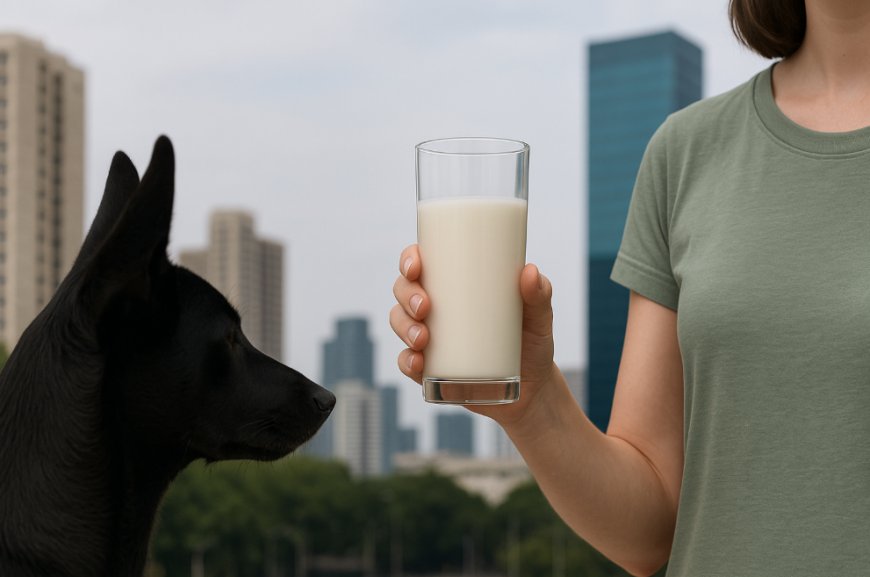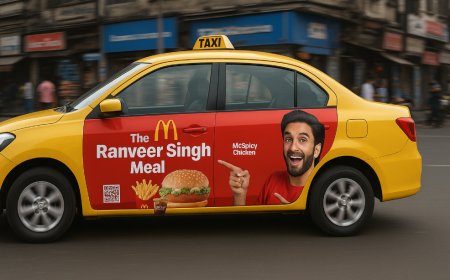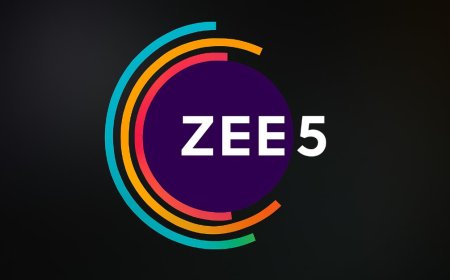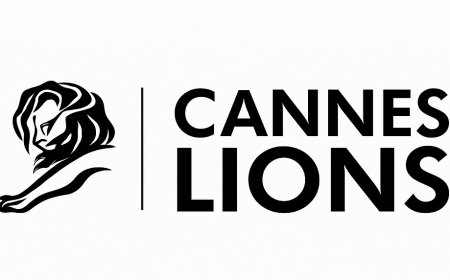PETA’s Bold Dog Milk Campaign Sparks Debate and Attention Across India
PETA’s latest dog milk out-of-home (OOH) campaign challenges societal norms around dairy consumption. Discover how the provocative billboard stunt ignited debate, raised eyebrows, and opened fresh dialogue on animal rights and veganism.

Introduction: A Billboard That Barks Louder Than Words
In the crowded streets of India’s metros, consumers are used to bold, bizarre, and brand-led outdoor advertisements. But few were prepared for the jolt delivered by the latest PETA India campaign, which asked a question so absurd it made people stop in their tracks: “Would you drink dog’s milk?”
Part of a controversial but undeniably effective out-of-home (OOH) campaign, this eye-catching initiative from People for the Ethical Treatment of Animals (PETA) wasn’t selling a product—it was challenging perceptions. The premise was simple: if the idea of drinking dog milk disgusts you, why is cow’s milk any different?
The billboard wasn’t just an ad. It was a conversation starter—and an explosive one at that.
The Message Behind the Madness
PETA is no stranger to aggressive activism. Known globally for campaigns that stir discomfort to inspire change, the organization has once again played its trademark card: shock value with a cause.
The dog milk billboard, displayed in key high-traffic areas like Mumbai, Delhi, and Bengaluru, served one purpose—to make people rethink the ethics of dairy consumption. By drawing attention to the inconsistency in society’s views toward animal treatment, the campaign flipped the narrative. If milking a dog sounds absurd or inappropriate, why is milking a cow—an equally sentient being—considered normal, even healthy?
At the heart of it lies a clear call: go vegan.
Visual Elements That Stopped Traffic
The creative execution was deceptively simple: a clean, white billboard featuring a woman holding a glass of white liquid with a questioning caption, “Would You Drink Dog’s Milk?”
What made it jarring wasn’t just the idea, but the pairing of familiar imagery (a glass of milk) with an unfamiliar source (a dog). The minimal design let the unsettling thought sink in without distraction.
There was no logo plastered across the top, no QR code to scan—just a direct appeal to logic and empathy. This made the message all the more potent.
Reactions Across the Country: Mixed, Loud, and Viral
Unsurprisingly, the billboard drew mixed responses, ranging from enthusiastic applause to sharp criticism.
Supporters Said:
-
"It made me think. I never questioned my dairy habits until now."
-
"Brilliant! It uses discomfort to uncover hypocrisy."
-
"This is what activism should be—raw, real, and impossible to ignore."
Critics Argued:
-
"This is too extreme and disrespectful to cultural food traditions."
-
"There’s a better way to raise awareness without shock."
-
"PETA always goes too far."
On social media, hashtags like #DogMilk, #PETAIndia, and #VeganBillboard began trending. Instagram stories featured user-generated content of people posing in front of the billboard, either mocking or admiring it. On Twitter, debates raged on—some users defending animal rights passionately, while others dismissed the stunt as over-the-top activism.
But in the world of advertising, engagement means success—and by that measure, PETA hit its mark.
Why This Strategy Works: The Psychology of Shock
There’s a method to PETA’s madness. Controversial advertising, while risky, excels at disrupting habitual thought patterns. Most consumers never stop to think about where their milk comes from, how cows are treated, or whether ethical alternatives exist.
By introducing an absurd idea—drinking dog milk—the campaign jolts the public out of complacency. This tactic is known as pattern interruption in marketing psychology. Once the pattern is broken, the brain starts questioning the status quo.
In a cluttered media landscape, only the bold survive. PETA’s billboard didn’t just get noticed; it got remembered.
The Cultural Context: India’s Dairy Debate
India is one of the world’s largest consumers and producers of dairy. Milk is deeply embedded in religious, cultural, and culinary traditions. From ghee-laden meals to offering milk to deities, dairy has long been synonymous with nourishment and sanctity.
This makes PETA’s campaign especially provocative in the Indian context.
By questioning milk consumption itself, PETA isn’t just challenging dietary habits—it’s confronting a centuries-old cultural foundation. That’s a high-stakes gamble, but also an opportunity to spark meaningful debate about how traditions evolve in the face of modern ethics.
Animal Cruelty in the Dairy Industry: The Unseen Truth
One of the main pillars of this campaign is raising awareness about the conditions in the dairy industry. PETA alleges that in commercial settings:
-
Cows are artificially inseminated repeatedly to maintain milk production.
-
Calves are separated from their mothers soon after birth.
-
Male calves are often abandoned or slaughtered as they’re not useful for milk.
-
Cows live in cramped, unsanitary conditions with limited access to open pastures.
By placing a dog—a creature most people consider a companion—in place of a cow, PETA asks a chilling question: Would you treat your pet this way?
This emotional appeal targets cognitive dissonance—when people’s actions don’t align with their values—and encourages them to re-evaluate their choices.
Alternative Narratives: The Rise of Veganism in India
Despite cultural attachment to dairy, veganism is gaining traction in urban India. Cities like Mumbai, Bengaluru, and Pune have seen a rise in:
-
Plant-based cafés
-
Vegan dairy alternatives (soy, almond, oat, and coconut milk)
-
Social media influencers promoting cruelty-free lifestyles
-
Local dairy startups pivoting toward ethical sourcing or plant-based production
PETA’s campaign, while extreme to some, aligns with this growing consciousness around sustainable and compassionate living.
It’s not about banning traditions—it’s about offering alternatives and encouraging informed choices.
Media Amplification: From Billboard to Boardroom
Though the campaign started as an outdoor installation, it quickly moved into the digital space. PETA capitalized on the attention by:
-
Releasing behind-the-scenes videos explaining the concept
-
Partnering with vegan influencers to discuss dairy alternatives
-
Hosting online webinars and vegan starter kit downloads
-
Encouraging people to share their reactions under custom hashtags
Within days, the campaign was featured in top news publications and marketing journals. Whether supportive or not, nearly every outlet covered it, achieving massive media value without a high budget—a hallmark of successful guerrilla marketing.
Lessons for Brands and Activists Alike
PETA’s dog milk billboard may have ruffled feathers, but it offers some important takeaways:
-
Controversy is a tool, not a goal. The campaign was rooted in a message, not shock for shock’s sake.
-
Minimalist design can amplify impact. The stark visuals gave space for the idea to hit harder.
-
Cultural context matters. The campaign’s success or backlash will vary depending on regional values.
-
Offline starts online conversations. Strategic use of OOH ads can create viral digital ripple effects.
-
Real change requires discomfort. Activism, by its nature, is about shaking foundations—not comforting audiences.
Conclusion: Disturbing or Necessary? You Decide.
The “Would You Drink Dog’s Milk?” campaign isn’t easy to digest—literally or metaphorically. But that was never the point.
PETA didn’t set out to be agreeable. It set out to ignite reflection, even if it meant making people uncomfortable. In a world where marketing often tiptoes around offense, this campaign kicked the door open and asked the hard questions.
What's Your Reaction?
 Like
0
Like
0
 Dislike
0
Dislike
0
 Love
0
Love
0
 Funny
0
Funny
0
 Angry
0
Angry
0
 Sad
0
Sad
0
 Wow
0
Wow
0












































